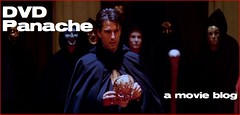
Ross sipped his coffee and looked at the computer screen with eyes that have had a little bit too much coffee. Ross liked coffee, and he liked being called "Ross." He once had a first name, but no one can really remember what it was. Ever since he started reading Lee Child books, Ross dropped the first name, explaining it as "that's what Reacher would do." Reacher. Jack Reacher. Though commonly known as "Reacher." The lead character in a series of novels by Lee Child. You might describe Reacher as curt. He gets things done, in the quickest way possible. Lee Child could also be described as curt. He likes short sentences, and doesn't go on too long about anything. Except when describing simple objects, like a crow bar -- the kind with seven coats of black paint on it, except on the tips because it's been used hundreds of times over the years, to break through locks and open crates, probably crates containing exotic guns. See that? I could only get a few lines about that crow bar, but old Lee could go on for paragraphs about it...
My wife calls Reacher books "Army porn," and I partially agree with that. Part of what makes Reacher such an interesting lead character is how he spent his whole life in the military (his father was a Marine, and Reacher left the Army as an MP major), thus giving him little understanding of the civilian world. Reacher now spends his life getting roped into kidnap and assassination schemes, while also finding the time to get accidentally involved with tough, achingly gorgeous and athletic women who also happen to be single. It's a life.
But that doesn't mean you have to be in the military to enjoy the books. My wife can't stop making fun of how ridiculous the Reacher books are, yet she's read more of them than I have. My father and one of my uncles have read every book in the series, neither of whom were in the military. But if you have a military background, it makes Reacher books nearly impossible to put down. Lee Child himself -- born and raised in the U.K. -- appears to have no military background, yet he exhibits a fascinating knowledge of the U.S. Army, as well as international military history.
Reacher novels tend to hook you from page one. Like Reacher himself, the books don't have time to get fancy or wordy, the action usually starts on that first page -- or in the prologue. Since Reacher left the Army, he spends his time as a professional drifter, and the first chapter spends a little time updating you on where he's found himself. This is always my favorite part, as Child's writing is a bit more loose and jovial before he gets down to business about whatever predicament Reacher gets involved in. Of the four Reacher novels I've read, Tripwire is my favorite, and has a great opening chapter describing what Reacher's up to in Key West:
[...] and now he was headed for his evening job, which was something
else he got paid for that most men would gladly do for free. He was the
bouncer at the nude bar Costello had mentioned. On Duval. He sat in there all
night with no shirt on, looking tough, drinking free drinks and making sure the
naked women didn't get hassled. Then somebody gave him fifty bucks for
it.
"It's a chore," he said. "But somebody's got to do it, I guess."
There are 14 Reacher novels, and Child makes sure they all have a personality of their own. Some of them are written in the first person, and at least one takes place in the distant past, when Reacher was still in the Army. For a prolific writer, Child became a novelist fairly recently (1997) and all of his books are about Reacher. I bring this up because it's interesting to see his growth as a writer. His second book, Die Trying, reads like the script to a 7-hour action miniseries on TNT. It's almost 100 percent action, with wall-to-wall broken necks, explosions and pinpoint sniper shots. His tenth Reacher novel, The Hard Way, saves all the action for the last couple chapters and is comprised almost entirely of hard-nosed detective work and information gathering. It's also much more interesting and exciting than Die Trying.
My favorite Reacher novel is Tripwire, an enthralling story told masterfully from two fronts that converge at the very end. Separating it distinctly from other Reacher novels is its terrifying villain, "Hook" Hobie, a relentless, terrible man with burns on half his face and a hook for a hand. He also makes a point of introducing himself with "I'm Hook Hobie" the instant he meets anyone, friend or foe. Child's writing style makes it easy to read 30-40 pages before you notice, he's a master of introducing new characters and telling you just enough about them without slowing the action down at all. He is also fond of ending a chapter with a one line paragraph introducing a juicy plot development, which makes it hard to stop reading.
If there's an easy complaint about Reacher as a fictional character, it's that he's a little too much like Batman. Batman in the sense that solutions to problems can come to him a bit too easily, not to mention that he's 6-5 230 and walks away unscathed from just about every fight (and there are plenty of fights for him). Child balances this problem by giving Reacher some worthy advesaries, like seperatist groups and off-their-rocker ex-military.
Reacher novels aren't going to win any Pulitzers, but if you find yourself with some hours to spare at Denver International Airport, head over to that revolving paperback rack and look for Child, Lee. And thank me later.








































